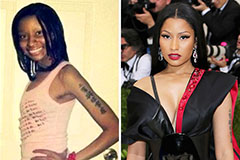Expanded Reach, Same Exceptional Quality
Recognized for its dedication to excellence, MyCigarsASAP.com presents an exclusive assortment of premium cigars from renowned brands in the industry. With the expansion into West Hollywood, the company maintains its provision of rapid access to a comprehensive range of luxury cigars, keeping the same stringent quality control that has gained it trust among cigar enthusiasts.
Cigar Delivery West Hollywood
CALL (800) 654-7959
Customers in West Hollywood can select from famous brands including: • Arturo Fuente – Presenting a wide collection of meticulously created cigars. • Montecristo – Renowned for its refined, well-rounded concoctions that suit an array of tastes. • Cohiba – Esteemed globally for providing a full-bodied, potent smoking experience. • Davidoff – A hallmark of refinement, featuring cigars of incomparable uniformity and grade. • My Father's Cigars – Offering intense, full flavors that are influenced by Cuban cigar heritage. • Ashton – Celebrated for its velvety, elegant flavor, created from the best Dominican tobaccos. • Padron – Acclaimed for its intense tastes and exemplary craftsmanship, including the much-coveted 1964 Anniversary Series. • Romeo y Julieta – A staple choice renowned for its consistent tastes and consistent quality.
This broad array ensures that MyCigarsASAP.com caters to a broad spectrum of preferences, with cigars originating from famous regions like Nicaragua, the Dominican Republic, and Honduras.
Focus on Freshness and Excellence
Grade is at the foundation of MyCigarsASAP.com’s functions. To certify that each cigar is received in perfect condition, the company implements rigorous quality control standards, including carefully monitored storage and carefully selected inventory. Every consignment is treated with care, securing that the cigars are provided fresh and rich in taste. Also, their group of cigar specialists is prepared to supply personalized suggestions, ensuring every customer's experience is personalized and informative.
Quick and Easy Delivery to West Hollywood
With this latest service expansion, MyCigarsASAP.com strengthens its role as one of the quickest premium cigar delivery services in the area. Whether for a unexpected occasion, a set occasion, or a easygoing evening, inhabitants in West Hollywood can now appreciate swift cigar deliveries within 30 to 60 minutes of making an order. This prompt service delivers a improved convenience to West Hollywood’s cigar fans.
Cigar Delivery West Hollywood
CALL (800) 654-7959
About MyCigarsASAP.com
MyCigarsASAP.com is a Los Angeles-headquartered cigar delivery service dedicated to providing swift, steady access to a luxury assortment of cigars. With a priority on quality, freshness, and personalized service, the company has earned a reputation as a trusted source for cigar lovers across the region. Now, with increased service to West Hollywood, MyCigarsASAP.com continues to lead the way in delivering first-class cigars efficiently and accurately.
For more details or to request an order for swift delivery, call (800) 654-7959.
Cigar Commencement and History: A Journey Through Ages
Cigars, often connected with extravagance, legacy, and skill, hold a vibrant legacy extending hundreds of years. The development of cigars mirrors the intersection of peoples, discovery, and commercial trade. This discourse probes the enchanting beginnings and history of cigars, documenting their voyage from indigenous rituals in the Americas to developing into a worldwide icon of sophistication.
The Historic Start: Cigars in Pre-Columbian Cultures Cigars have their earliest origins in the local traditions of the Americas. Prehistoric civilizations, including the Mayans, Aztecs, and Taínos, are believed to have enjoyed folded tobacco plants. Archeological artifacts expose representations of Mayans using on terracotta items going back to as early as the 10th century. The label “cigar” likely stems from the Mayan term “sikar,” which signifies to smoke.
In these primeval societies, tobacco was not only a leisure product but also held mystical significance. Shamans and tribal leaders used tobacco during holy ceremonies, assuming it allowed them to engage with the spirit world. Tobacco was also used healingly, offering soothing for various ailments, such as migraines and gastrointestinal issues.
Tobacco’s Advent to Europe: Columbus and the New World The European heritage of cigars began with Christopher Columbus’s landing in the Americas in 1492. His crew found original people consuming packages of dried tobacco foliage, an unknown practice that fascinated them. Columbus and his men carried pieces back to Spain, marking the dawn of Europe’s relationship with tobacco.
The practice of puffing quickly spread across Europe. Spaniards embraced it first, and by the 16th century, tobacco use evolved into popular among European nobility. Early cigars were crude when contrasted with modern versions, but their allure extended to Italy, Portugal, and France. Tobacco was also viewed as a cure-all, believed to fix a range of ailments from colds to lassitude.
Cuban Influence: Birthplace of the Modern Cigar Cuba’s position in cigar chronicle is key, converting tobacco from a domestic commodity into a international phenomenon. In the 17th century, Cuba became the nucleus of cigar creation due to its optimal climate and fertile soil, particularly in the Vuelta Abajo region. Cuban cigars quickly earned a fame for incomparable quality and workmanship.
By the 1800s, the Cuban cigar industry was booming, and the term “Havana cigar” turned into synonymous with excellence. Expert artisans, known as torcedores, crafted cigars by hand, improving techniques that continue largely unchanged today. Many of the world’s most renowned cigar brands, such as Montecristo, Cohiba, and Romeo y Julieta, ascribe their beginnings to this era.
The Expansion to North America and Europe The market for cigar s spread beyond Cuba’s borders by the 18th and 19th centuries. Tobacco plantations started surfacing in other Caribbean islands, such as the Dominican Republic and Jamaica, as well as parts of Central America, including Honduras and Nicaragua. These regions are still cigar powerhouses today, each infusing singular characteristics to their products.
In Europe, Spain and the Netherlands emerged as notable consumers and producers of cigars. The Dutch founded a healthy cigar industry, importing Cuban tobacco and combining it with homegrown leaves to produce individual styles. Meanwhile, cigar smoking in the United States transformed into associated with status and masculinity. The rise of industrialization saw cigar factories grow across the U.S., particularly in Florida, where Cuban immigrants transferred their craftsmanship and traditions.
Cigars and Social Status: From Aristocracy to the Everyday Man Throughout chronicle, cigars have been closely associated to status, wealth, and celebration. By the 19th century, cigars were a essential among European and American aristocrats. Monarchs such as King Edward VII of England were well-known cigar enthusiasts, further enhancing their popularity among the elite.
In the United States, cigars became related to political power and business success. Industrial magnates like Andrew Carnegie and John D. Rockefeller were often photographed smoking cigars, strengthening their image as signs of wealth. Prominent figures such as Winston Churchill famously championed cigars, contributing to their prestige.
However, cigars were not limited to the upper class. The growth of the cigar industry led to the making of reasonably priced options, making cigars attainable to the working class. Cigar clubs and lounges arose, offering venues where people from all walks of life could partake in a smoke.
The Cuban Embargo and the Rise of New Markets The Cuban cigar industry experienced a major transition in 1962 when the U.S. government, under President John F. Kennedy, implemented a trade embargo on Cuba. Cuban cigars, previously a standard among American cigar lovers, became illegal in the U.S., creating both deficiency and aura around them. As a result, many Cuban cigar makers escaped to neighboring countries like the Dominican Republic, Nicaragua, and Honduras, where they continued their trade using Cuban-seed tobacco.
This geopolitical change opened new markets and assisted to the rise of premium cigars outside Cuba. Today, cigars from these regions are admired for their quality, contending with Cuban cigars in flavor, construction, and diversity.
Cigars in Popular Culture and Cinema Cigars have secured their place in popular culture, often embodying power, victory, and sophistication. Hollywood accepted the cigar as an icon, featuring it prominently in films. Characters like Tony Montana in Scarface and Winston Churchill in The Darkest Hour sustain the connection between cigars and authority.
Moreover, cigars are a staple at celebrations, marking occasions such as weddings, business deals, and the birth of children. Cigar lounges and clubs continue to serve as hangouts for socializing and networking, bolstering their cultural relevance.
The Modern Cigar Renaissance The late 20th and early 21st centuries have observed a resurgence of cigar culture. The 1990s “Cigar Boom” in the U.S. saw a rekindled interest in premium cigars, with new devotees joining the scene. Skill, diversity in blends, and artisanal techniques have advanced the modern cigar renaissance.
Specialty cigar brands have attracted popularity, offering particular blends that attract to a developing demographic of younger smokers. Additionally, the rise of cigar lounges and online cigar shops has made it more accessible for consumers to discover different varieties from around the world. Events like Cigar Aficionado’s Big Smoke further reveal the persistent draw of cigars in contemporary culture.
Cigars and Sustainability: The Future of the Industry As the cigar industry develops, sustainability has become a key issue. Environmental factors, including climate change and deforestation, impact tobacco cultivation. Many cigar manufacturers are implementing eco-friendly practices by using sustainable farming methods and endorsing reforestation efforts.
Fair labor practices are also becoming widespread, with companies assuring fair wages and safe working conditions for the farmers and artisans involved in cigar production. The focus on sustainability strives to conserve the industry’s legacy while meeting the expectations of socially conscious consumers.
Conclusion: A Legacy of Tradition and Craftsmanship From the spiritual customs of indigenous tribes to the sumptuous lounges of today, cigars have journeyed a long and legendary path. Each breath of a premium cigar contains with it the legacy of generations of artistry, tradition, and cultural significance. Whether relished by royalty, industrial tycoons, or modern-day lovers, cigars continue to signify more than just tobacco—they represent a lifestyle, a celebration, and a connection to history.
As the world of cigars changes, one thing persists constant: the attraction of reclining, lighting up, and delighting in imp source the crafty combination of tradition and innovation encapsulated in each leaf.
The Cigar Manufacturing Process: A Journey from Past to Present
The Cigar Manufacturing Process: A Journey from Past to Present
Introduction
One cigar, one particular timeless symbol of luxury and polish, has the rich history that bridges centuries and continents. From its early origins among local peoples to its modern incarnation as one global industry, the process of crafting a cigar is an blend of craft, science, and tradition. This article scrutinizes the intricate journey of cigar manufacturing, differentiating the methods of the past with those of today, and illuminating how innovation and heritage blend in this engaging craft.
I. Historical Overview of Cigar Manufacturing
A. Early Origins of Cigars
The history of cigars dates back to the indigenous peoples of the Caribbean and Mesoamerica, who cultivated tobacco and used it in religious and medicinal practices. When Christopher Columbus arrived in the New World in 1492, he and his crew perceived the native Taíno people of Cuba and Hispaniola shaping and smoking dried tobacco leaves. This practice fascinated the Europeans, who introduced tobacco back to the Old World, where it quickly secured popularity.
B. Traditional Cigar-Making Techniques
1. Tobacco Cultivation
In the early days, tobacco cultivation was one manual and labor-intensive process. Farmers depended on natural cycles and traditional knowledge to grow tobacco plants. The seeds were introduced by hand, and the plants called for meticulous care to thrive.
2. Leaf Selection and Fermentation
After harvesting, the tobacco leaves went through a natural air-curing process. They were placed in curing barns to dry slowly, enabling the chlorophyll to break down and the leaves to acquire their characteristic brown color. Fermentation was next, where the leaves were layered in piles called pilones. The natural heat generated by microbial activity decreased harshness and accentuated the rich flavors.
3. Rolling Methods
Cigar rolling was a craft passed down through generations. Skilled artisans, known as torcedores, assembled cigars entirely by hand. They selected filler leaves, secured them with a binder leaf, and enveloped the bunch with a high-quality wrapper leaf. This meticulous process demanded precision and an eye for quality.
C. The Role of Cuban Cigar Tradition
Cuba became identical with premium cigars due to its ideal climate and soil conditions, particularly in the Vuelta Abajo region. The country's cigar-making techniques defined the standard for quality and craftsmanship. Cuban cigars were in high demand, and the methods developed there impacted cigar production worldwide.
II. Modern Cigar Manufacturing Process
A. Advances in Tobacco Cultivation
1. Genetic Selection
Modern agriculture has incorporated genetic selection to augment tobacco plant qualities. Scientists and farmers work together to develop tobacco strains resistant to diseases and pests, and with desired flavor profiles. This produces more consistent and high-quality crops.
2. Modern Farming Techniques
Today, tobacco farming incorporates advanced irrigation systems, soil management, and crop rotation to maximize yield and quality. Precision agriculture technologies, such as GPS mapping and drones, help monitor plant health and optimize resource use.
B. Leaf Processing Today
1. Fermentation Methods
While the fundamental principles of fermentation last, modern facilities oversee temperature and humidity with greater precision. This control secures uniformity and boosts flavor development. Some producers utilize multiple fermentation cycles to refine the tobacco further.
2. Aging and Storage
Post-fermentation aging has become a critical step. Tobacco leaves are aged in controlled environments, sometimes for several years, to mellow the tobacco and refine complexity. Aging rooms are equipped with technology to copyright ideal conditions.
C. Contemporary Cigar Rolling
1. Machine-Made vs. Hand-Rolled Cigars
The 20th century saw the arrival of mechanization to cigar production. Machine-made cigars employ homogenized tobacco leaf (HTL) binders and wrappers, allowing mass production at lower costs. However, premium cigars last to be hand-rolled, safeguarding the artisanal tradition.
2. Quality Control
Modern factories carry out strict quality control measures. This includes regular inspections, draw testing to guarantee proper airflow, and sensory evaluations. Technology enhances but does not substitute the expertise of seasoned inspectors.
D. Innovations in Packaging and Distribution
Advancements in packaging materials secure cigars from environmental factors during shipping. Vacuum-sealed packaging, humidification devices, and sophisticated distribution logistics guarantee cigars reach consumers in optimal condition.
III. Comparing Past and Present Methods
A. Technological Advances
Technology has enhanced many aspects of cigar manufacturing without diminishing the importance of skilled labor. Mechanization takes care of repetitive tasks, while artisans focus on quality and craftsmanship.
B. Maintaining Tradition in a Modern Industry
Despite technological progress, the essence of cigar-making stays rooted in tradition. Many producers stress hand-rolled methods and traditional fermentation to sustain authenticity and fulfill aficionados who value heritage.
C. Challenges and Opportunities
The industry experiences challenges like regulatory changes, health concerns, and market fluctuations. However, opportunities appear from expanding global markets, premiumization trends, and consumer interest in artisanal products.
IV. The Art of Cigar Making: Preserving Craftsmanship
A. The Role of the Torcedor (Cigar Roller)
Torcedores are revered figures in cigar factories. Their expertise governs the cigar's construction and performance. Training to become a master roller can take years, demonstrating the complexity of the craft.
B. Apprenticeship and Skills Transfer
Many factories manage apprenticeship programs to hand down skills to new generations. This maintains the survival of traditional techniques and protects high standards in production.
C. Cultural Significance
Cigar-making is more than the business; it's the cultural heritage in regions like Cuba, the Dominican Republic, and Nicaragua. Festivals, museums, and tours recognize this legacy, pulling in enthusiasts worldwide.
The cigar manufacturing process is the captivating blend of time-honored traditions and modern innovations. While technology has added efficiencies and consistency, the heart of cigar-making lies in the hands of skilled artisans who continue a legacy that covers centuries. Grasping this journey enhances the appreciation of cigars, not just as products but as manifestations of cultural heritage and craftsmanship.
 Jake Lloyd Then & Now!
Jake Lloyd Then & Now! Ashley Johnson Then & Now!
Ashley Johnson Then & Now! Brandy Then & Now!
Brandy Then & Now! Richard Dean Anderson Then & Now!
Richard Dean Anderson Then & Now! Nicki Minaj Then & Now!
Nicki Minaj Then & Now!